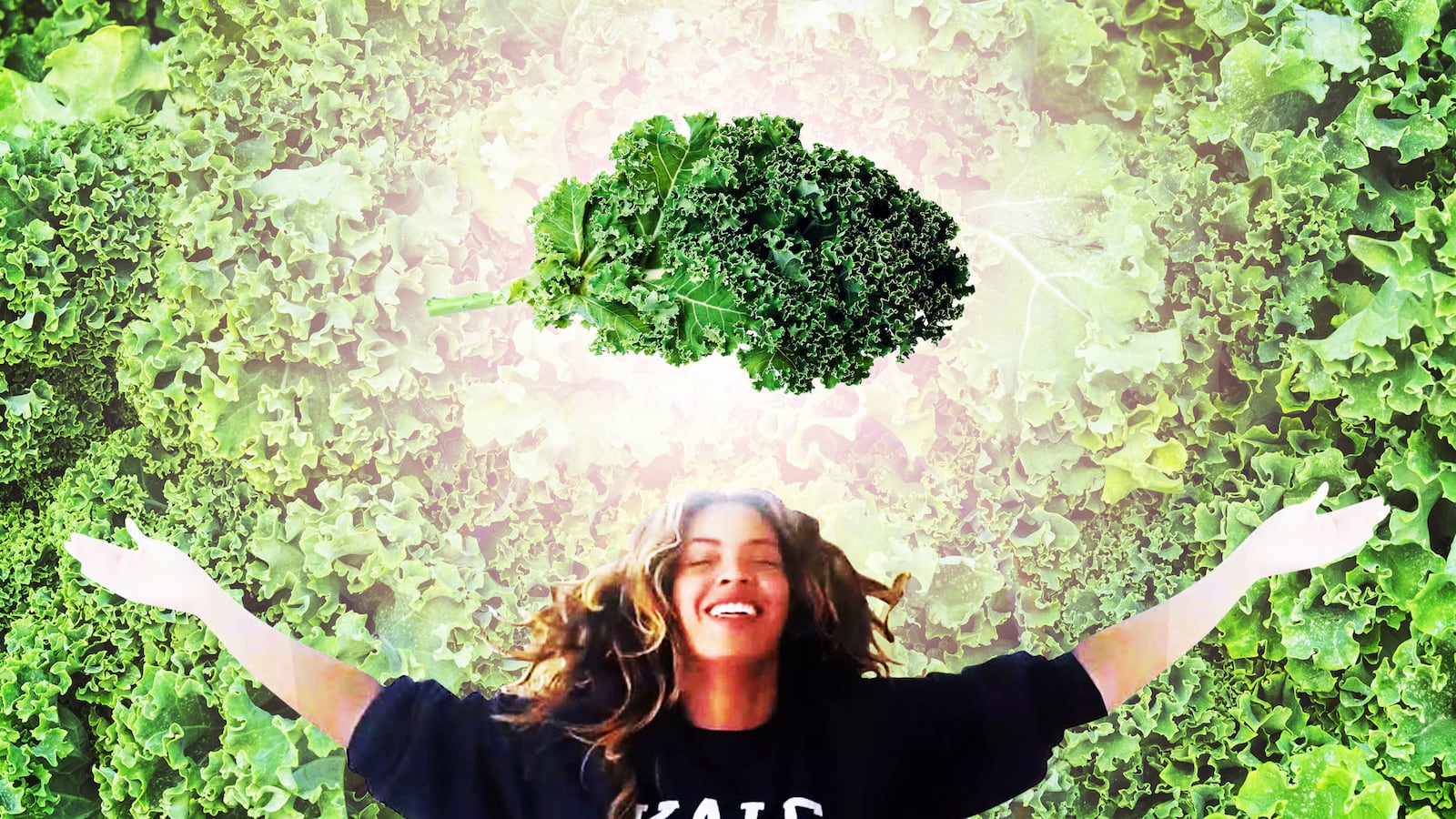Color it green, black, brown, blue, purple, white, or red.
Call it braunkohl, cavolo nero or riccio, chou frisé, borecole, colewort, yuyi ganlan or brassica oleracea acephala.
In any color and by any name, I know and hate kale when I see it—and these days I see it everywhere: like scorched bits of burned paper atop pizzas, muffled into pesto as a dusty, bitter blanket over pasta and risotto, studded like flecks of parchment into brownies and cookies, muddying up the cool elegance of ice creams and sorbets. Recently a food article in The New York Times buried Caesar by suggesting that kale be tossed in with the supple romaine lettuce that is the classic standard for this gently piquant salad. Like equally ubiquitous roasted (a.k.a. burned) carrots and beets and bronzy quinoa, kale on a menu tells gourmet wannabes that they are dining on the cutting edge.

All of which is why for the past couple of years, I have waged a one-woman anti-kale campaign. Granted kale is high in fiber, low in calories, rich in vitamins A and C and minerals, but so are many other delicious foods, including all of the lovely cabbages, broccoli, kohlrabi, romanesco, and cauliflower, members of that have far more delicate, nuanced flavors and textures enabling them to compliment many other foods as salads, sauces, and side dishes. All are members of the same brassica family, of which kale surely must be the black sheep.
Imagine then my chagrin a few weeks ago when my son reminded me that a long time ago I wrote a paean to kale, suggesting it in several preparations as an antidote to cold winter nights. He recalled it because when the article appeared in 1976 he was a kid in elementary school and was teased by classmates for being quoted with the opinion that kale tasted like “industrial strength broccoli.”
Digging out that 40-year-old article and reading through it, I realized why I liked kale then and cannot stand it now: It’s not the kale that’s at fault, it’s the cooks who now serve it raw, grilled, roasted, toasted, dried, so that it has the texture of broken ceramic chips.
In the olden days of my Brooklyn childhood, kale was strictly a winter vegetable and the only one greengrocers left outdoors on stands where the gray-green leaves became etched with icy hoar frost and white rivulets of snow. Reason was that kale, always considered tough, benefitted from freezing, as the frozen cell walls would expand and break, thereby tenderizing the fibrous stalks before cooking.

Then, trimmed of their spines, the leaves were slow-simmered, always with some sort of fat, whether from meat (salt pork or ham hocks in the southern soul food way) or with garlic and olive oil in Italy, or peanut oil, garlic, and ginger in China, or in the nurturing Portuguese soup, caldo verde, which becomes creamy as potatoes cook down with the kale. In northern Germany, much-loved braunkohl is simmered with pinkelwurst, a softly fatty pork sausage plumped with gritty buckwheat groats (kasha to many), sliced onions and enlivenings of black pepper. For an even richer and more flavorful result, North Europeans may first saute the kale in goose, duck, or chicken fat or butter before steaming in a little water or, preferably, stock.
All of which proves, if indeed it needs proving, that fashionable innovation is not always an improvement and that succeeding generations hold to different benchmarks. Taste, after all, implies opinion so it is always wise to ask, “Compared to what?”






